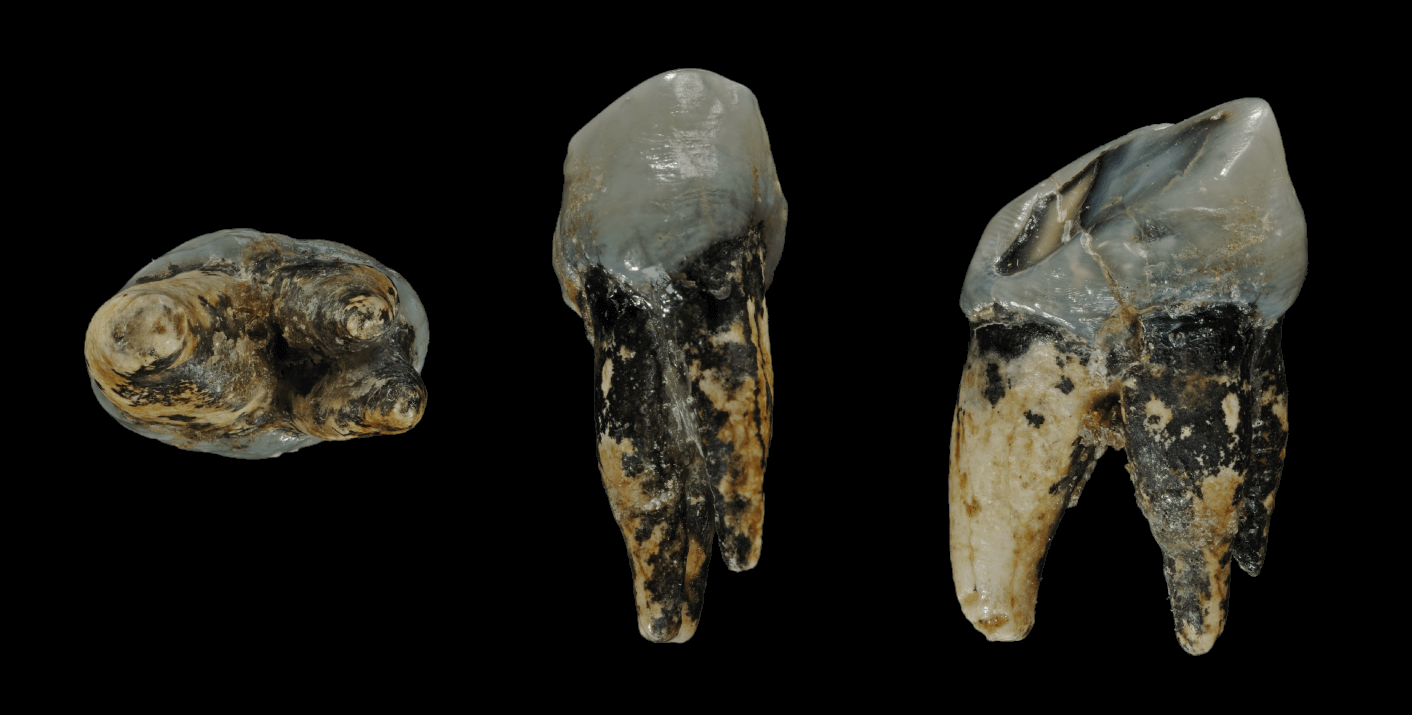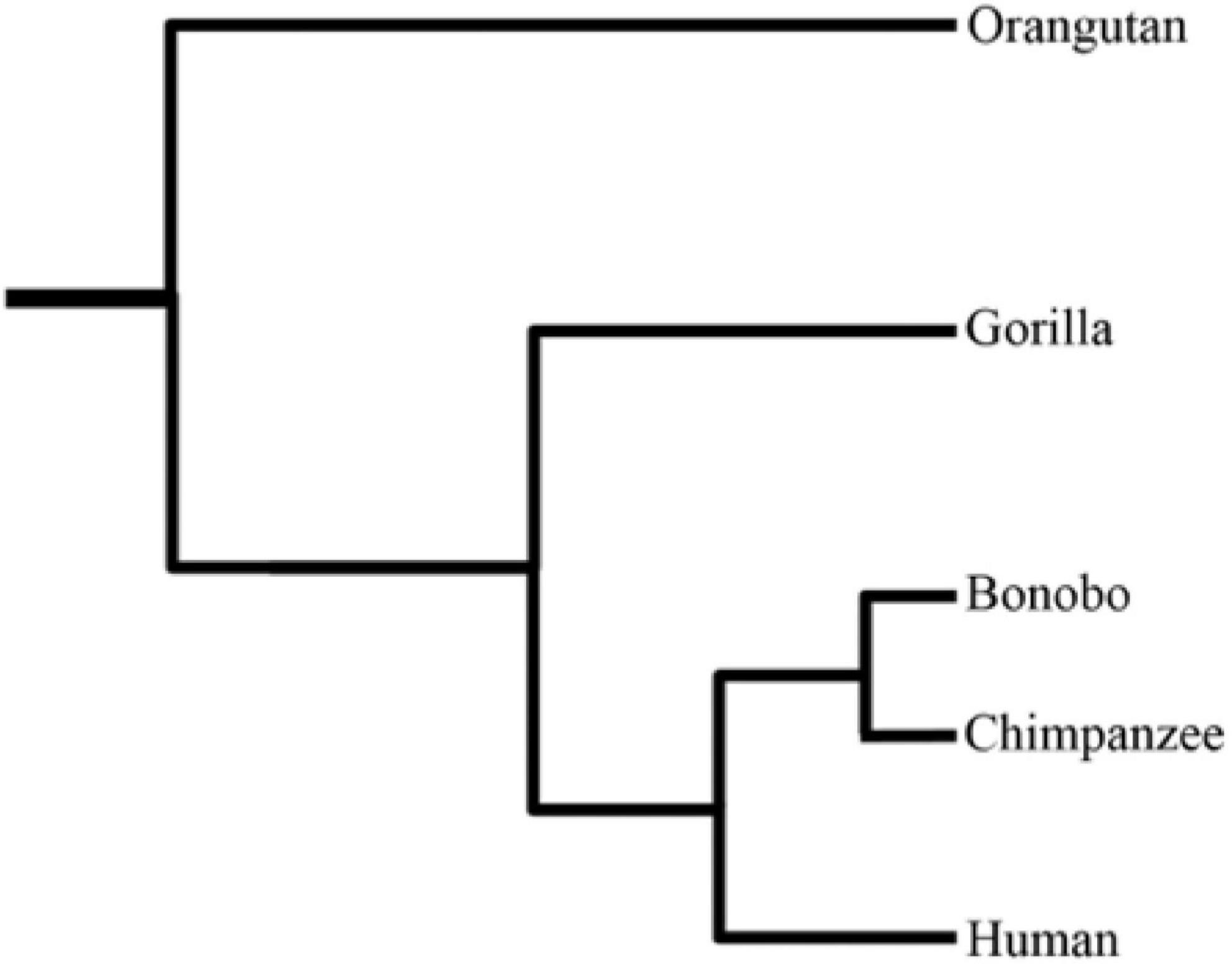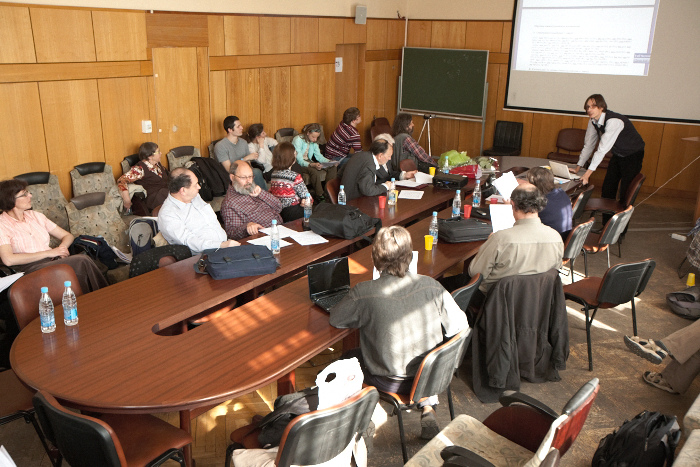|
Little Foot
"Little Foot" (Stw 573) is the nickname given to a nearly complete Australopithecus fossil skeleton found in 1994–1998 in the cave system of Sterkfontein, South Africa. Originally nicknamed "little foot" in 1995 when four ankle bones in a museum collection were sufficient to ascertain that the individual had been able to walk upright, the remainder of the skeleton was, subsequently, located in the cave from which the ankle bones had been collected. Because the bones were completely embedded in concrete-like rock, their extremely difficult and tedious extraction took around 15 years. The bones proved to be the most complete skeleton of the early hominin lineage leading to humans, with 90% of the body being recovered. Dating of the specimen has proved controversial, with estimates ranging from 2.2 to 3.5 million years old, and its taxonomic placement is likewise disputed. Discovery Four ankle bones of this specimen were collected in 1980 but were unidentified among numerou ... [...More Info...] [...Related Items...] OR: [Wikipedia] [Google] [Baidu] |
Australopithecus
''Australopithecus'' (, ; ) is a genus of early hominins that existed in Africa during the Late Pliocene and Early Pleistocene. The genus ''Homo'' (which includes modern humans) emerged within ''Australopithecus'', as sister to e.g. ''Australopithecus sediba''. Also the genera ''Paranthropus'' and '' Kenyanthropus'' emerged within ''Australopithecus''. ''Australopithecus'' is a member of the subtribe Australopithecina, which sometimes also includes '' Ardipithecus'', though the term "australopithecine" is sometimes used to refer only to members of ''Australopithecus''. Species include '' A. garhi'', '' A. africanus'', '' A. sediba'', '' A. afarensis, A. anamensis, A. bahrelghazali'' and ''A. deyiremeda''. Debate exists as to whether some ''Australopithecus'' species should be reclassified into new genera, or if ''Paranthropus'' and ''Kenyanthropus'' are synonymous with ''Australopithecus'', in part because of the taxonomic inconsistency. The earliest known member of the genus ... [...More Info...] [...Related Items...] OR: [Wikipedia] [Google] [Baidu] |
Hadar, Ethiopia
Hadar (also spelled ''Qad daqar'', ''Qadaqar''; Afar "white 'qidi''stream 'daqar'') Jon Kalb ''Adventures in the Bone Trade'' (New York: Copernicus Books, 2001), p. 83 is a paleontological site in Mille district, Administrative Zone 1 of the Afar Region, Ethiopia, 15 km upstream (west) of the A1 road's bridge across the Awash River (Adayitu kebele).E. N. Dimaggio et al., "Tephrostratigraphy and depositional environment of young (<2.94 Ma) Hadar Formation deposits at Ledi-Geraru, Afar, Ethiopia", ''Journal of African Earth Sciences'' 112A (December 2015), pp. 234–250 (Figure 2), . It is situated on the southern edge of the (part of East Africa's ), along the left ba ... [...More Info...] [...Related Items...] OR: [Wikipedia] [Google] [Baidu] |
1994 Archaeological Discoveries
File:1994 Events Collage.png, From left, clockwise: The 1994 Winter Olympics are held in Lillehammer, Norway; The Kaiser Permanente building after the 1994 Northridge earthquake; A model of the MS Estonia, which sank in the Baltic Sea; Nelson Mandela casts his vote in the 1994 South African general election, in which he was elected South Africa's first president, and which effectively brought Apartheid to an end; NAFTA, which was signed in 1992, comes into effect in Canada, the United States, and Mexico; The first passenger rail service to utilize the newly-opened Channel tunnel; The 1994 FIFA World Cup is held in the United States; Skulls from the Rwandan genocide, in which over half a million Tutsi people were massacred by Hutus., 300x300px, thumb rect 0 0 200 200 1994 Winter Olympics rect 200 0 400 200 Northridge earthquake rect 400 0 600 200 Sinking of the MS Estonia rect 0 200 300 400 Rwandan genocide rect 300 200 600 400 Nelson Mandela rect 0 400 200 600 1994 FIFA World ... [...More Info...] [...Related Items...] OR: [Wikipedia] [Google] [Baidu] |
Archaeological Discoveries In South Africa
Archaeology or archeology is the scientific study of human activity through the recovery and analysis of material culture. The archaeological record consists of artifacts, architecture, biofacts or ecofacts, sites, and cultural landscapes. Archaeology can be considered both a social science and a branch of the humanities. It is usually considered an independent academic discipline, but may also be classified as part of anthropology (in North America – the four-field approach), history or geography. Archaeologists study human prehistory and history, from the development of the first stone tools at Lomekwi in East Africa 3.3 million years ago up until recent decades. Archaeology is distinct from palaeontology, which is the study of fossil remains. Archaeology is particularly important for learning about prehistoric societies, for which, by definition, there are no written records. Prehistory includes over 99% of the human past, from the Paleolithic until the advent of ... [...More Info...] [...Related Items...] OR: [Wikipedia] [Google] [Baidu] |
Australopithecus Fossils
''Australopithecus'' (, ; ) is a genus of early hominins that existed in Africa during the Late Pliocene and Early Pleistocene. The genus ''Homo'' (which includes modern humans) emerged within ''Australopithecus'', as sister to e.g. ''Australopithecus sediba''. Also the genera ''Paranthropus'' and ''Kenyanthropus'' emerged within ''Australopithecus''. ''Australopithecus'' is a member of the subtribe Australopithecina, which sometimes also includes ''Ardipithecus'', though the term "australopithecine" is sometimes used to refer only to members of ''Australopithecus''. Species include ''Australopithecus garhi, A. garhi'', ''Australopithecus africanus, A. africanus'', ''Australopithecus sediba, A. sediba'', ''Australopithecus afarensis, A. afarensis, Australopithecus anamensis, A. anamensis, Australopithecus bahrelghazali, A. bahrelghazali'' and ''Australopithecus deyiremeda, A. deyiremeda''. Debate exists as to whether some ''Australopithecus'' species should be reclassified into ne ... [...More Info...] [...Related Items...] OR: [Wikipedia] [Google] [Baidu] |
List Of Human Evolution Fossils
The following tables give an overview of notable finds of hominin fossils and remains relating to human evolution, beginning with the formation of the tribe Hominini (the divergence of the human and chimpanzee lineages) in the late Miocene, roughly 7 to 8 million years ago. As there are thousands of fossils, mostly fragmentary, often consisting of single bones or isolated teeth with complete skulls and skeletons rare, this overview is not complete, but show some of the most important findings. The fossils are arranged by approximate age as determined by radiometric dating and/or incremental dating and the species name represents current consensus; if there is no clear scientific consensus the other possible classifications are indicated. The early fossils shown are not considered ancestors to ''Homo sapiens'' but are closely related to ancestors and are therefore important to the study of the lineage. After 1.5 million years ago (extinction of ''Paranthropus''), all fossils sho ... [...More Info...] [...Related Items...] OR: [Wikipedia] [Google] [Baidu] |
List Of Fossil Sites
This list of fossil sites is a worldwide list of localities known well for the presence of fossils. Some entries in this list are notable for a single, unique find, while others are notable for the large number of fossils found there. Many of the entries in this list are considered Lagerstätten (sedimentary deposits that exhibits extraordinary fossils with exceptional preservation—sometimes including preserved soft tissues). Lagerstätten are indicated by a note () in the noteworthiness column. Fossils may be found either associated with a geological formation A geological formation, or simply formation, is a body of rock having a consistent set of physical characteristics (lithology) that distinguishes it from adjacent bodies of rock, and which occupies a particular position in the layers of rock expo ... or at a single geographic site. Geological formations consist of rock that was deposited during a specific period of time. They usually extend for large areas, and som ... [...More Info...] [...Related Items...] OR: [Wikipedia] [Google] [Baidu] |
Gorilla
Gorillas are herbivorous, predominantly ground-dwelling great apes that inhabit the tropical forests of equatorial Africa. The genus ''Gorilla'' is divided into two species: the eastern gorilla and the western gorilla, and either four or five subspecies. The DNA of gorillas is highly similar to that of humans, from 95 to 99% depending on what is included, and they are the next closest living relatives to humans after chimpanzees and bonobos. Gorillas are the largest living primates, reaching heights between 1.25 and 1.8 metres, weights between 100 and 270 kg, and arm spans up to 2.6 metres, depending on species and sex. They tend to live in troops, with the leader being called a silverback. The Eastern gorilla is distinguished from the Western by darker fur colour and some other minor morphological differences. Gorillas tend to live 35–40 years in the wild. The oldest gorilla known is Fatou (b. 1957), who is still alive at the advanced age of 65 years. ... [...More Info...] [...Related Items...] OR: [Wikipedia] [Google] [Baidu] |
Chimpanzee
The chimpanzee (''Pan troglodytes''), also known as simply the chimp, is a species of great ape native to the forest and savannah of tropical Africa. It has four confirmed subspecies and a fifth proposed subspecies. When its close relative the bonobo was more commonly known as the pygmy chimpanzee, this species was often called the common chimpanzee or the robust chimpanzee. The chimpanzee and the bonobo are the only species in the genus ''Pan''. Evidence from fossils and DNA sequencing shows that ''Pan'' is a sister taxon to the human lineage and is humans' closest living relative. The chimpanzee is covered in coarse black hair, but has a bare face, fingers, toes, palms of the hands, and soles of the feet. It is larger and more robust than the bonobo, weighing for males and for females and standing . The chimpanzee lives in groups that range in size from 15 to 150 members, although individuals travel and forage in much smaller groups during the day. The species lives ... [...More Info...] [...Related Items...] OR: [Wikipedia] [Google] [Baidu] |
Flowstone
Flowstones are sheetlike deposits of calcite or other carbonate minerals, formed where water flows down the walls or along the floors of a cave. They are typically found in "solution caves", in limestone, where they are the most common speleothem. However, they may form in any type of cave where water enters that has picked up dissolved minerals. Flowstones are formed via the degassing of vadose percolation waters. Flowstone may also form on manmade structures as a result of calcium hydroxide being leached from concrete, lime or mortar. These secondary deposits created outside the cave environment, which mimic the shapes and forms of speleothems, are classified as " calthemites" and are associated with concrete degradation.Smith, G.K., (2016). “Calcite Straw Stalactites Growing From Concrete Structures”, Cave and Karst Science, Vol.43, No.1, P.4-10, (April 2016), British Cave Research Association, ISSN 1356-191X. Formation Flowing films of water that move along floors or ... [...More Info...] [...Related Items...] OR: [Wikipedia] [Google] [Baidu] |
Sterkfontein Caves 6
Sterkfontein (Afrikaans for ''Strong Spring'') is a set of limestone caves of special interest to paleo- anthropologists located in Gauteng province, about northwest of Johannesburg, South Africa in the Muldersdrift area close to the town of Krugersdorp. The archaeological sites of Swartkrans and Kromdraai are in the same area. Sterkfontein is a South African National Heritage Site and was also declared a World Heritage Site in 2000. The area in which it is situated is known as the Cradle of Humankind. The Sterkfontein Caves are also home to numerous wild African species including ''Belonogaster petiolata'', a wasp species of which there is a large nesting presence. Numerous early hominin remains have been found at the site over the last few decades. These have been attributed to ''Australopithecus'', early ''Homo'' and ''Paranthropus''. History of investigations Modern excavation of the caves began in the late 1890s by limestone miners who noticed the fossils and brought ... [...More Info...] [...Related Items...] OR: [Wikipedia] [Google] [Baidu] |
Lumpers And Splitters
Lumpers and splitters are opposing factions in any discipline that has to place individual examples into rigorously defined categories. The lumper–splitter problem occurs when there is the desire to create classifications and assign examples to them, for example schools of literature, biological Biology is the scientific study of life. It is a natural science with a broad scope but has several unifying themes that tie it together as a single, coherent field. For instance, all organisms are made up of cells that process hereditary in ... taxon, taxa and so on. A "lumper" is a person who assigns examples broadly, assuming that differences are not as important as signature similarities. A "splitter" is one who makes precise definitions, and creates new categories to classify samples that differ in key ways. Origin of the terms The earliest known use of these terms was by Charles Darwin, in a letter to Joseph Dalton Hooker in 1857: ''It is good to have hair-splitters & lump ... [...More Info...] [...Related Items...] OR: [Wikipedia] [Google] [Baidu] |


.jpg)




